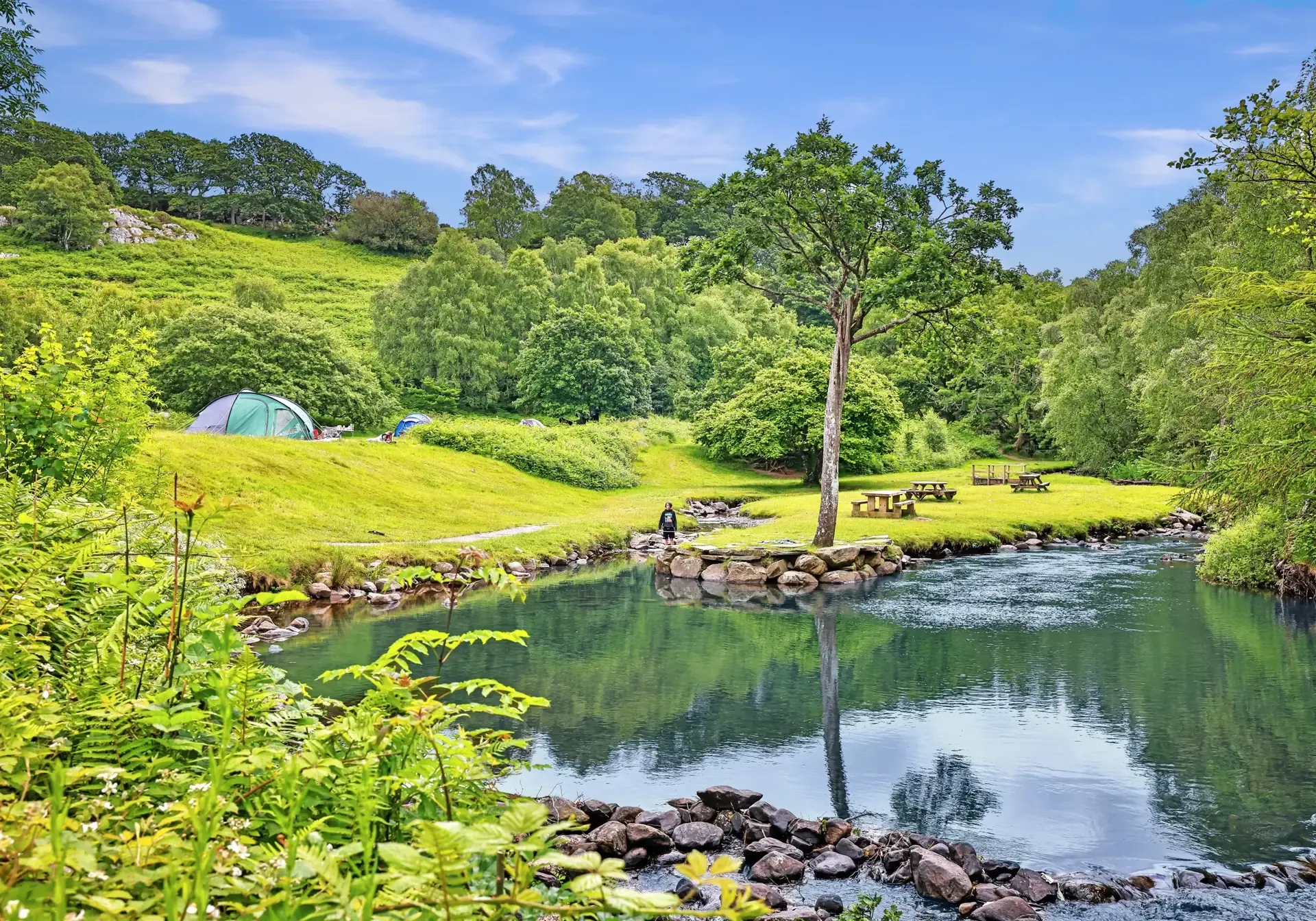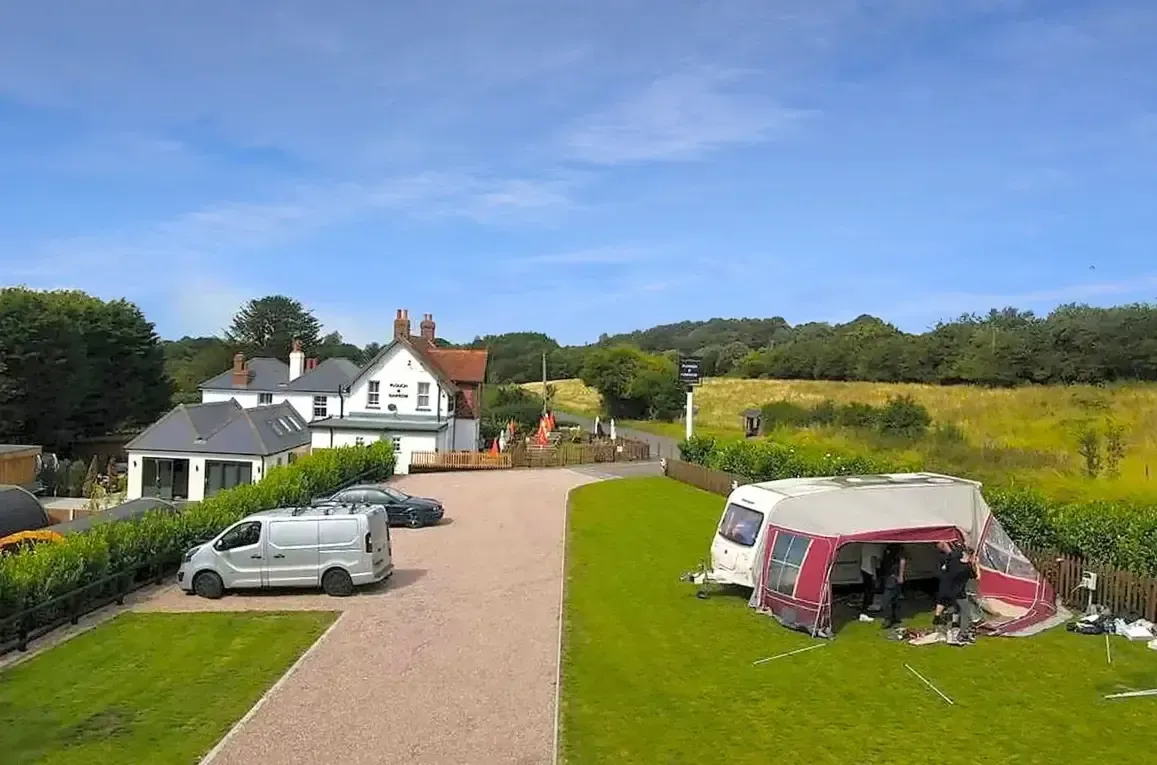- Cumbria and the Lake District
- Derbyshire and the Peak District
- Devon and Dartmoor
- Exmoor
- Cornwall
- Yorkshire, the Dales and the North York Moors
- Snowdonia
- Brecon Beacons
Apart from the Dartmoor National Park, there is no policy of open access for wild camping (free camping to some of you!) in the countryside of England and Wales like there is in Scotland.
All land is owned, whether by individuals or organizations, and so the law says that if you want to go wild camping, you should get prior permission from the landowners to avoid trespassing. There's a great article on how to find the owner and ask for permission at Bushcraft UK.
Of course, this may not always be possible and in those circumstances, particularly in remote areas, you may practice wild camping provided that you follow the wild camping code of conduct. However, you should bear in mind that if landowners ask you to leave, then you are legally obliged to do so.
Wild camping is also prohibited on Open Access Lands (shaded orange on Ordnance Survey maps).
Good areas for wild camping are high mountain areas, and national parks such as the Lake District and Snowdonia. Here is our breakdown of the most common areas, roughly in popularity order.
Wild camping in England
Wild camping in Cumbria and the Lake District
There is a tradition of wild camping in the Lake District, so it is well tolerated by landowners as long as you follow the wild camping code, though you aren't allowed to camp on verges or in car parks. That said, there are plenty of organised campsites in most areas of the park too, so wild camping is a better option for when those campsites are out of reasonable walking time.
If you are going to wild camp in the park, pitch your tent at 450m or above and out of sight of any walking paths and any well known tarns. You should keep your stay to a single night for each location, pitch late and leave early, and possibly avoid August when the Lake District gets busier.
Thornthwaite Beacon is one good spot (OS Grid Reference NY 432099), as is Place Fell (NY 405169), though wild camping is all about freedom so generally somewhere higher up and flat is all that you need.
For water, there are plenty of freshwater streams to drink from, but higher altitudes are best. You should still boil and/or sterilise the water before you drink - though there are gadgets to consider such as Water to Go bottles and SteriPEN.
[ADBAR:NATIVEAD]
Wild camping in Derbyshire and the Peak District
Wild camping in the Peak District is discouraged in some areas and banned completely in others. Where landowners might turn a blind eye elsewhere, that's less likely in the Peak District and in summer when the moors are very dry and the fire risk is very high, park rangers will actively move people on.
The National Park Authority don't allow wild camping on any land they own, though bivvying is less objectionable and the rangers are able to use their discretion. If you are a small party, have been discreet, pitched late and are only staying for a single night, you are likely to be left alone. The high fells are your best bet in that scenario.
For most, the White Peak isn't seen as sufficiently wild, and the Dark Peak can be relatively high risk with fires an absolute no-no. Find somewhere well off the beaten track by looking for valleys without marked footpaths - or perhaps try one of the old shooting cabins.
Again, there are designated campsites which should be used where possible.
Wild camping in Devon and Dartmoor
Wild camping on Dartmoor is the exception to the rule in England and Wales and rights for camping are enshrined in the amended National Parks & Access to the Countryside Act.
As a result, Dartmoor National Park is a great choice for wild camping as one or two night breaks are allowed in much of the park. Certain areas, such as Cadover, Haytor, Holne Moor, Roborough and Spitchwick Common are prohibited at all times, as are Dartmoor’s military ranges when in use.
Campers should research the acceptable wild camping areas within the national park, and plan in advance rather than simply turning up and hoping that wild camping is allowed in the area they choose.
As with the Lake District, choose a pitch at least 100m from any road and hidden from roadside and residential view. Do also check the Dartmoor firing times webpage! The army still uses areas of Dartmoor (Okehampton, Willsworthy and Merrivale) for live firing training, though summer weekends are normally clear. You can also watch out for red flags (day) and red lights (night).
Wild camping on Exmoor
Wild camping on Exmoor isn't quite as simple as it is on Dartmoor, but remote single night camping or bivvying as part of a long distance walk is generally seen as acceptable provided you follow the code. As with most National Parks, multi-night stays and camping with a vehicle wouldn't be tolerated.
Some spots to try include Dunkery Beacon (the highest point on Exmoor, OS Grid Reference SS 891415 - quite exposed and no water supply) and Kennisham Forest another (SS 964358).
Wild camping in Cornwall
Whereas other areas tend to be most popular with backpackers, Cornwall sees a lot more campervan and motorhome looking for stop-overs. Many places will turn a blind eye to overnight stays, providing that you're only staying for a single night, and the Cornwall section of the Wild Camping forum has a number of threads with recommendations.
For backpackers, Bodmin Moor (possibly around Gold Diggings quarry, often misspelled Goldiggins, a great area for wild swimming too) is an option, though much of the area is farmland which should be avoided.
Wild camping in Yorkshire, the Dales and the North York Moors
As is the case with the Peak District, wild camping in the Yorkshire Dales is restricted and discouraged - especially during grouse shooting season - however the usual line applies if you are discreet.
Remote and unspoiled Lake Semerwater is one option, but (though previously popular) Kirkby Malham Parish Council have asked us to make it clear that Gordale Scar near Malham is not an appropriate spot. The Parish Council own the land, which is next to a busy footpath and SSSI site, and no camping is allowed there at any time. Instead you should stay at Gordale Campsite.
Wild camping in Wales
Wild camping in Snowdonia
Snowdonia National Park is very wild camping friendly. If you camp high and off the beaten track, pitch late, leave early, and follow the code you will be fine. Use the contours on your OS map to find somewhere flat with water nearby and go for it!
Camping above Aber Falls (OS Grid Reference SH 6685470027) is spectacular.
Wild camping in the Brecon Beacons
As part of visitor management planning, the Brecon Beacons NPA has a list of farmers who allow occasional camping for a small charge. Email them asking for their Camping on Farms leaflet.
Two locations where wild camping is allowed are Melte (OS Grid Reference SN 918084) and Llech Llia (SN 922193), though both locations are restricted to small groups of 10 people or less.
Fancy something with a little added luxury, comfort and style? Explroe our favourite glamping sites in Brecon Beacons now and see what takes yoru fancy.
Download our list of everything of you need to remember for the perfect camping trip!
DownloadIn the UK, you don't have to travel far to see some amazing sights.
We're lucky enough to have world-besting landscapes, history and wildlife right on our doorstep.
Where will you explore next?
Explore Destinations


